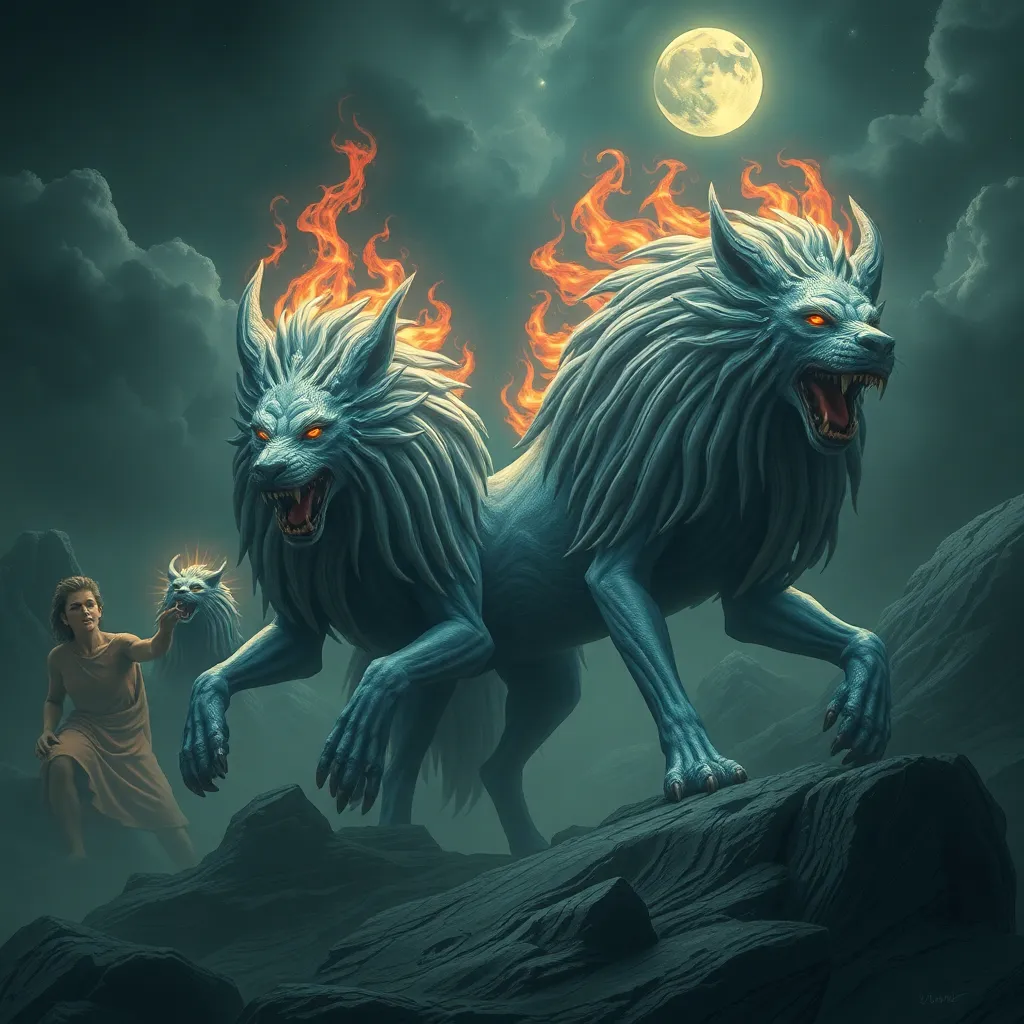Cerberus in Literature and Art: Tracing the Impact of the Myth Across Time
I. Introduction
Cerberus, the legendary three-headed dog of Greek mythology, serves as one of the most iconic figures within the realm of mythological creatures. Often depicted as a fearsome guardian of the Underworld, Cerberus has captivated the imaginations of people across various cultures and epochs. His significance extends beyond mere myth; he represents the intersection of fear, loyalty, and the afterlife. This article aims to explore the multifaceted impact of Cerberus through literature and art, tracing his evolution from ancient times to contemporary culture.
II. Origins of Cerberus in Greek Mythology
A pivotal figure in Greek mythology, Cerberus is typically described as a monstrous dog with three heads, a serpent for a tail, and a mane of snakes. His primary role is to guard the gates of Hades, preventing the souls of the deceased from escaping the Underworld and ensuring that the living do not intrude upon the realm of the dead.
In the myth of Hades, Cerberus is often portrayed as a loyal servant to the god of the Underworld. The creature is mentioned in several ancient texts, including:
- Homer’s “Iliad” and “Odyssey”: Cerberus is referenced in these epic poems, highlighting his role as a guardian.
- Hesiod’s “Theogony”: This text offers insights into Cerberus’s lineage, describing him as the offspring of Typhon and Echidna.
- Apollodorus’s “Library”: In this work, Cerberus is depicted in the context of Heracles’s twelfth labor, where he is captured and brought to the surface.
III. Cerberus in Classical Art
The image of Cerberus has been vividly captured in various forms of classical art, from pottery to sculpture. Ancient Greek artists often depicted him in scenes that illustrated his fearsome nature and his role as a guardian of the Underworld.
Notable representations include:
- Pottery: Many ancient vases feature depictions of Cerberus, often shown in the act of confronting heroes like Heracles.
- Sculpture: Marble statues and reliefs from ancient Greece often showcase Cerberus in dramatic poses, emphasizing his menacing appearance.
The symbolism of Cerberus in visual arts is profound, representing not only the dangers of the afterlife but also the protective qualities of guardianship. Artists such as Praxiteles and others have left a lasting mark on how Cerberus is visualized.
IV. Cerberus in Roman Literature and Art
The myth of Cerberus was adapted and reinterpreted by Roman authors, who integrated him into their own cultural narratives. Writers such as Virgil and Ovid provided new dimensions to his character, often emphasizing his role as a mythological boundary keeper.
In Roman art, Cerberus appeared in various frescoes and mosaics, often depicted in scenes that reflected Roman beliefs about the afterlife. The influence of Roman perspectives on the myth included:
- Virgil’s “Aeneid”: Cerberus is portrayed as a fearsome guardian in the underworld, aligning with his Greek origins but with added Roman context.
- Mosaics: Roman mosaics frequently depicted Cerberus alongside other mythological figures, showcasing the blend of artistic styles and themes.
V. The Evolution of Cerberus in Medieval and Renaissance Literature
As time progressed into the medieval era, Cerberus’s image transformed significantly. Dante Alighieri’s “Inferno” provided a notable reinterpretation of Cerberus, who serves as a guardian of the gluttonous in the Third Circle of Hell. Dante’s portrayal emphasizes the themes of punishment and the consequences of earthly desires.
Additionally, Cerberus found a place in medieval bestiaries and illuminated manuscripts, where he was often depicted alongside other mythical creatures. Renaissance artists then reinterpreted Cerberus, drawing upon classical sources while imbuing their works with contemporary symbolism and themes of the period.
VI. Cerberus in Modern Literature and Pop Culture
In contemporary society, Cerberus continues to thrive in literature and popular culture. He has been reimagined in various forms, from novels to films and video games. This modern reinterpretation often reflects broader themes of loyalty, protection, and the duality of his character.
Examples of Cerberus in modern media include:
- Books: Cerberus appears in series such as Rick Riordan’s “Percy Jackson,” where he is depicted as a more approachable character.
- Films: In movies like “Harry Potter and the Sorcerer’s Stone,” a three-headed dog inspired by Cerberus serves as a guardian.
- Video Games: Cerberus is featured as a prominent character in games like “God of War” and “Dante’s Inferno,” showcasing his role as both a foe and a guardian.
- Graphic Novels: Modern graphic novels reinterpret Cerberus, often exploring psychological themes related to fear and loyalty.
VII. Cerberus as a Symbol: Themes and Interpretations
Beyond his narrative roles, Cerberus serves as a potent symbol within various thematic frameworks. His character embodies duality, representing both fear and loyalty, and raises essential questions about guardianship and the nature of the afterlife.
Key interpretations of Cerberus include:
- Guardian and Protector: Cerberus symbolizes the protective force that stands guard over thresholds, whether they be physical or metaphysical.
- Fear and Loyalty: The duality of Cerberus reflects the complex relationship between fear and loyalty, as he is both a terrifying creature and a devoted guardian.
- Mythology and Psychology: Cerberus is often discussed in psychological contexts, representing the inner fears and obstacles that individuals must confront.
VIII. Conclusion
The impact of Cerberus across time is profound and multifaceted. From his origins in Greek mythology to his reinterpretations in modern literature and art, Cerberus has remained an enduring figure that resonates with themes of guardianship, fear, and loyalty. His legacy continues to influence contemporary culture, reminding us of the relevance of myth in understanding our own lives and the world around us.
In conclusion, the myth of Cerberus serves as a powerful reminder of the rich tapestry of human storytelling, illustrating how ancient symbols can find new meaning in the ever-evolving landscape of culture.




